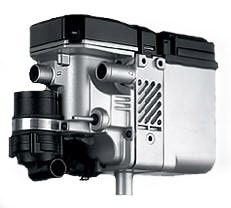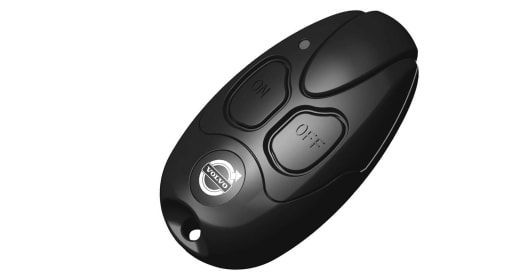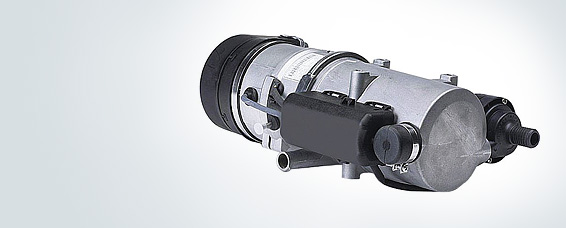In winter times, it's practically an understatement to say that most of us find it difficult to wake up from our warm beds and trade our much-needed comfort in the early hours of the morning for a cold, freezing experience inside the car you're about to drive to work. Let's face it, it's complete nightmare to get out of bed, look out the window, see the icing cold temperatures outside and imagine yourself walking down the alley and into your frozen car.
However, with the after market parking heater available nowadays for almost every newly-launched vehicle, this can all go away. We know this sounds more like a morning ad, but bear with us as we're about to unveil the mechanism behind this innovative, yet simple device aimed at warming the inside of your car – engine compartment included – way before you actually get into it.
The best thing about it is that you can use anything from a timer, remote control or even your mobile phone to set off the parking heater. They all work just as efficient. The main idea is that you don't necessarily have to start the engine yourself in order to warm it (and, along with it, the car's interior) but set it off from you home, prior to getting into the car. There are some car heaters that have the single function of warming up the engine compartment, while the interior of the car remains at the same cold-freezing temperatures as before.
Also, one should not mistake the parking heater with the regular car/cabin heater. Needless to say, once the engine is already warm, getting the inside of the car up to temperature is not such a big deal. Compared to that, the parking heater takes care of business without you having to actually start the engine, in exchange of approximately a fifth of a liter of gas (depends on the car). As we've said before, this device can be purchased by any car owner and installed personally, mounted in-house by the parent car company or fitted by an aftermarket parts maker.
The basic principle on which a parking heater is based on is the heating of the element from within the device. As it's practically an electric unit, the element is supplied energy from an outside source and starts to heat. At the same time, once the device is activated, a pump causes a small amount of fuel to be directed from the fuel tank and into the heating chamber, alongside particles of air from the outside of the car. Just as it happens in the combustion chamber of an engine, the air-fuel mix explodes once the heated element creates the proper temperature for that explosion.
After that, the coolant fluid that circulates around the device is slowly being warmed. It first reaches the car's heat exchanger, from which the warm air is being redirected towards the inner section of the car via the ventilation system, and after that the actual engine compartment. The next and last step of the cycle is the liquid being headed back to the parking heater device, from which this action will repeat itself for as long as it is necessary in order to reach the desired temperature inside the vehicle.
Earlier in this article, we've mentioned that there are several types of set-off devices from which one can choose to activate the parking heater. The difference between them are more comfort-related, in the sense that a preset timer can actually work for a number of times a day without you having to set if off every time. Most of the triggering devices can be activated from within a 1000-meter range, as it will also tell the heating unit the time it needs to get the temperature of the car to the desired level.
Now, we know what most of you will say: the main disadvantage of using such a unit is higher fuel consumption ratings. First of all, regardless of the amount of car's interior you're about to warm, the overall fuel consumption for that operation only is around a quarter-to-half a liter. That would be more than enough to heat up your car's engine and interior for approximately half-an-hour, which is more or less the projected aim for the parking heater's efficiency period (the official data differs from 15 to 30 minutes).
It's worth mentioning that once the desired temperature inside the car is reached, the parking heater device will cease to work on full mode, but rather switch to a fuel-saving mode. Most of them do anyway!
On the other hand, however, almost a third of that fuel loss will be compensated by the advantages of running the engine already heated. Most of you know by now that starting a car with a cold engine can be highly detrimental in terms of wear. In addition to that, the level of CO2 emissions when cold-starting an engine is approximately double as compared to starting a warm power plant, while the fuel consumption level in the former case is also higher than in the latter. Therefore, pre-warmed units not only work better in terms of engine protection, but also from an environmental and fuel-efficient point of view.
During winter time, there are some other advantages – more comfort related this time – to using this device day in and day out. The parking heater makes sure the windows of your car are not icy or frosted when you enter it, therefore allowing you to quickly start your car once you've turned on the engine.
While the pre-heating unit might come as an optional feature when you buy your car from the dealer, another option would be to go to an aftermarket parts maker and ask them to install a pre-heating kit on your existing vehicle. We're not trying to advertise for anyone on this site, but it's widely known that a bunch of companies have already established themselves as good decent players on that market. Among those, we'd like to include DEFA (Norwegian player in the Northern European market) or Webasto (German company).
However, with the after market parking heater available nowadays for almost every newly-launched vehicle, this can all go away. We know this sounds more like a morning ad, but bear with us as we're about to unveil the mechanism behind this innovative, yet simple device aimed at warming the inside of your car – engine compartment included – way before you actually get into it.
The best thing about it is that you can use anything from a timer, remote control or even your mobile phone to set off the parking heater. They all work just as efficient. The main idea is that you don't necessarily have to start the engine yourself in order to warm it (and, along with it, the car's interior) but set it off from you home, prior to getting into the car. There are some car heaters that have the single function of warming up the engine compartment, while the interior of the car remains at the same cold-freezing temperatures as before.
Also, one should not mistake the parking heater with the regular car/cabin heater. Needless to say, once the engine is already warm, getting the inside of the car up to temperature is not such a big deal. Compared to that, the parking heater takes care of business without you having to actually start the engine, in exchange of approximately a fifth of a liter of gas (depends on the car). As we've said before, this device can be purchased by any car owner and installed personally, mounted in-house by the parent car company or fitted by an aftermarket parts maker.
The basic principle on which a parking heater is based on is the heating of the element from within the device. As it's practically an electric unit, the element is supplied energy from an outside source and starts to heat. At the same time, once the device is activated, a pump causes a small amount of fuel to be directed from the fuel tank and into the heating chamber, alongside particles of air from the outside of the car. Just as it happens in the combustion chamber of an engine, the air-fuel mix explodes once the heated element creates the proper temperature for that explosion.
After that, the coolant fluid that circulates around the device is slowly being warmed. It first reaches the car's heat exchanger, from which the warm air is being redirected towards the inner section of the car via the ventilation system, and after that the actual engine compartment. The next and last step of the cycle is the liquid being headed back to the parking heater device, from which this action will repeat itself for as long as it is necessary in order to reach the desired temperature inside the vehicle.
Earlier in this article, we've mentioned that there are several types of set-off devices from which one can choose to activate the parking heater. The difference between them are more comfort-related, in the sense that a preset timer can actually work for a number of times a day without you having to set if off every time. Most of the triggering devices can be activated from within a 1000-meter range, as it will also tell the heating unit the time it needs to get the temperature of the car to the desired level.
Now, we know what most of you will say: the main disadvantage of using such a unit is higher fuel consumption ratings. First of all, regardless of the amount of car's interior you're about to warm, the overall fuel consumption for that operation only is around a quarter-to-half a liter. That would be more than enough to heat up your car's engine and interior for approximately half-an-hour, which is more or less the projected aim for the parking heater's efficiency period (the official data differs from 15 to 30 minutes).
It's worth mentioning that once the desired temperature inside the car is reached, the parking heater device will cease to work on full mode, but rather switch to a fuel-saving mode. Most of them do anyway!
On the other hand, however, almost a third of that fuel loss will be compensated by the advantages of running the engine already heated. Most of you know by now that starting a car with a cold engine can be highly detrimental in terms of wear. In addition to that, the level of CO2 emissions when cold-starting an engine is approximately double as compared to starting a warm power plant, while the fuel consumption level in the former case is also higher than in the latter. Therefore, pre-warmed units not only work better in terms of engine protection, but also from an environmental and fuel-efficient point of view.
During winter time, there are some other advantages – more comfort related this time – to using this device day in and day out. The parking heater makes sure the windows of your car are not icy or frosted when you enter it, therefore allowing you to quickly start your car once you've turned on the engine.
While the pre-heating unit might come as an optional feature when you buy your car from the dealer, another option would be to go to an aftermarket parts maker and ask them to install a pre-heating kit on your existing vehicle. We're not trying to advertise for anyone on this site, but it's widely known that a bunch of companies have already established themselves as good decent players on that market. Among those, we'd like to include DEFA (Norwegian player in the Northern European market) or Webasto (German company).




